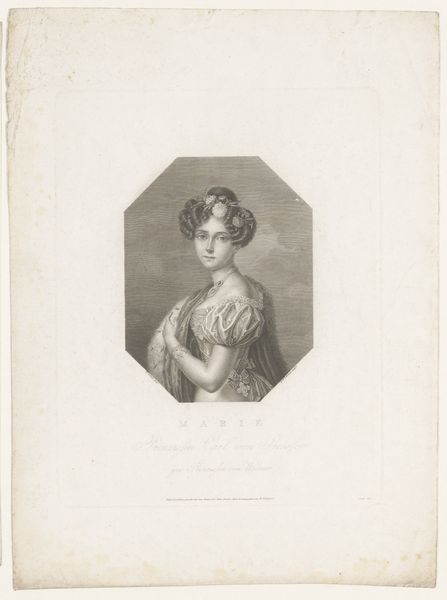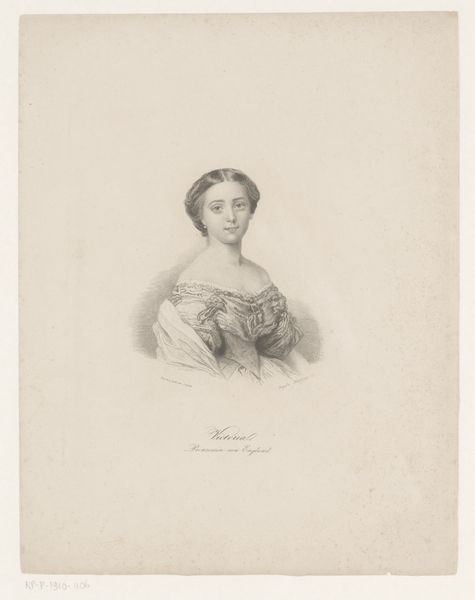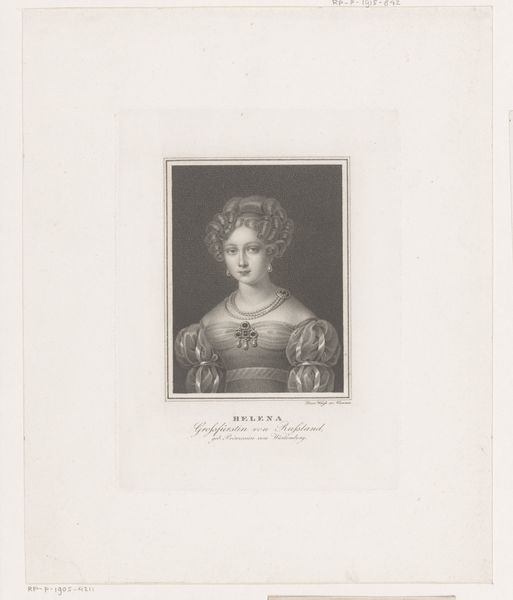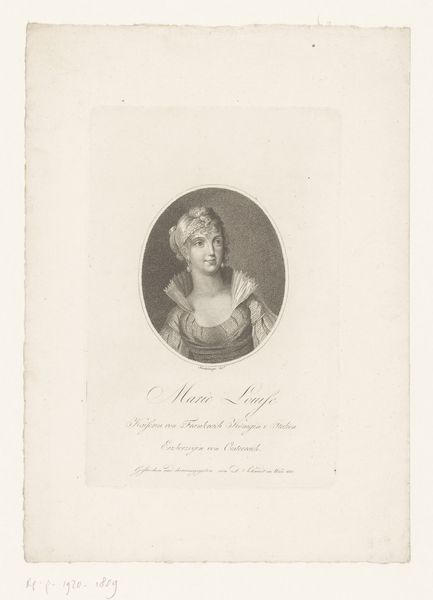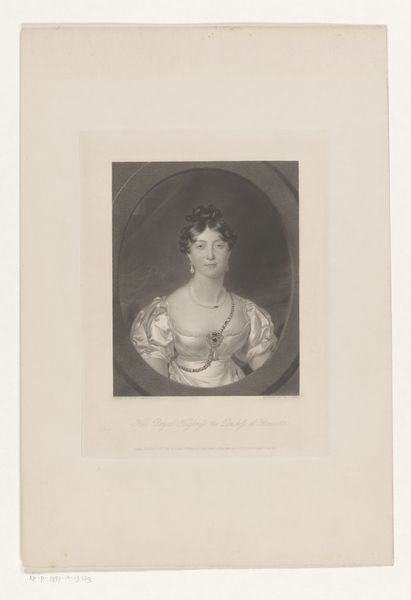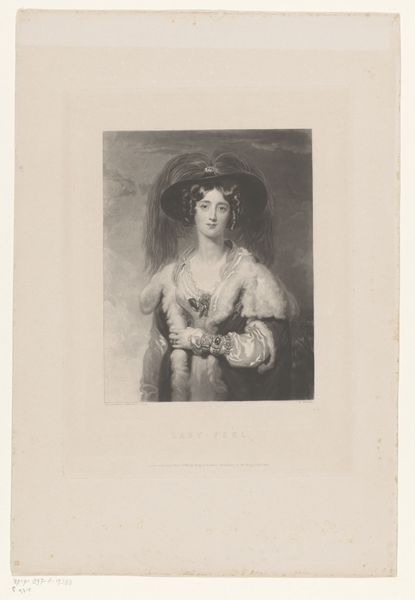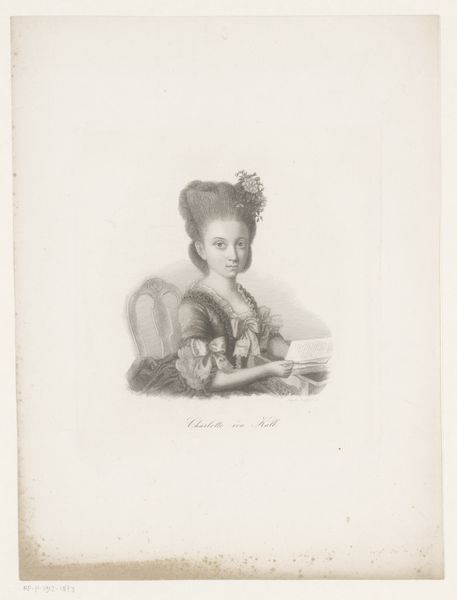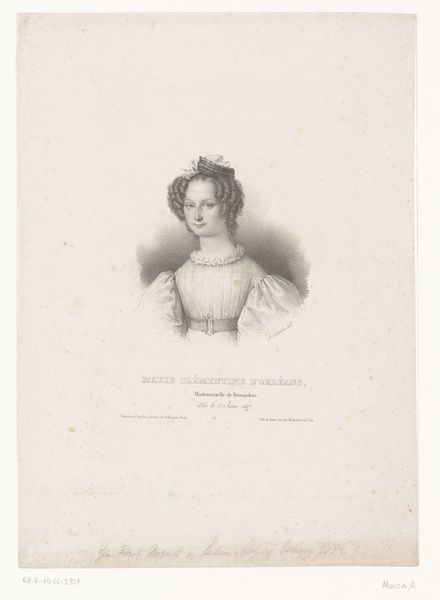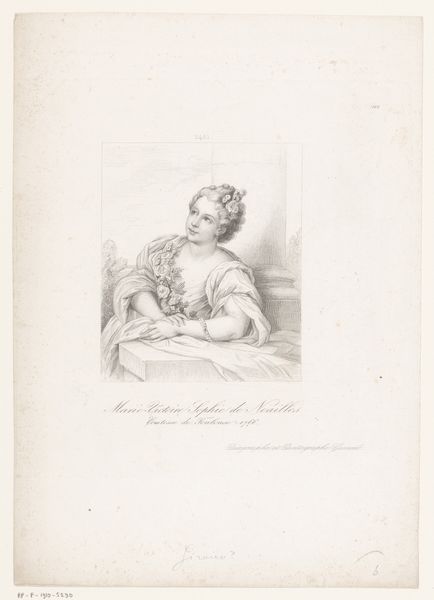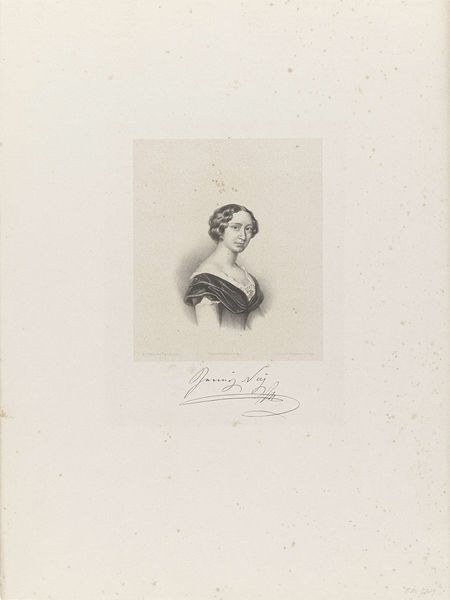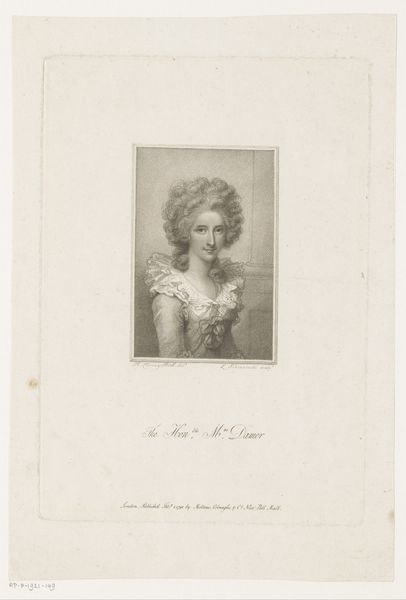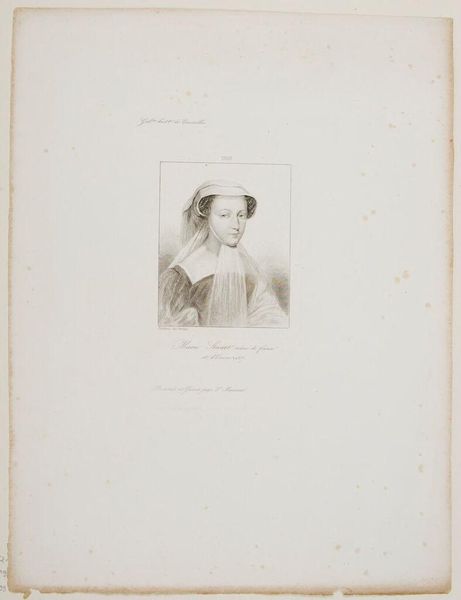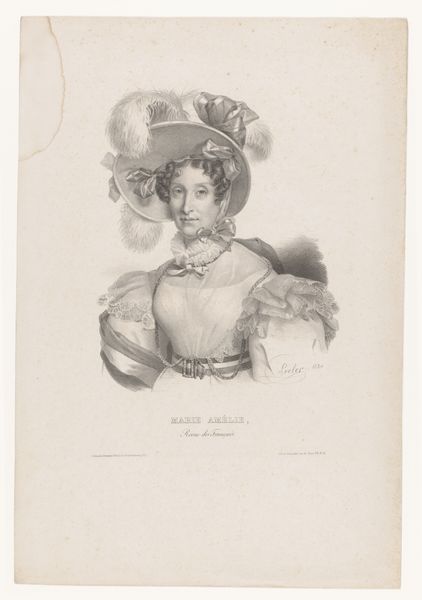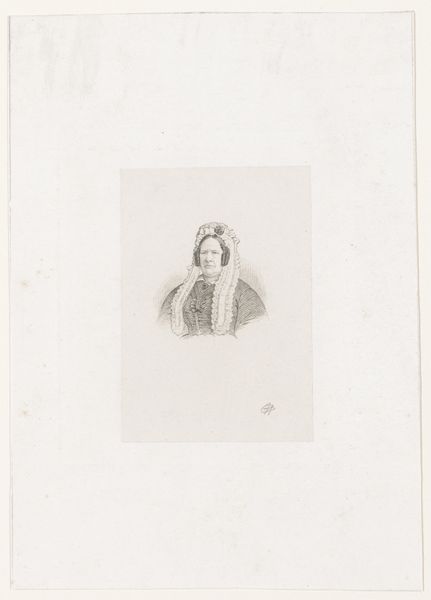
Dimensions: height 217 mm, width 188 mm
Copyright: Rijks Museum: Open Domain
Curator: This is "Portret van Isabella van Portugal," a lithograph created between 1848 and 1886 by Léon Mauduison. It’s a neoclassical print. Editor: Immediately, the formality hits you, doesn’t it? This controlled and detailed etching speaks to a certain kind of poised historical representation. Like a carefully composed sonnet in grayscale. Curator: Yes, the artist employs lithography to portray Isabella with a composed, almost idealized countenance typical of neoclassical portraiture. We can examine this through semiotics, how a historical painting, during neoclassicism, served as vehicles for conveying ideological or philosophical ideals through formal aesthetics. Editor: It feels intentionally… restrained. Isabella’s gaze is averted, there's this elaborate pearl necklace, a sort of luxurious cage, and the detail on the sleeves practically whispers about societal expectations and constraints placed upon her. Even the softness in the tones, this gentle lithographic haze, does it amplify a dream-like disconnect? Curator: The averted gaze, within the context of the portrait, is an invitation to decode elements within structural parameters. A lens to interpret subject representation—her status, influence—while ascribing agency from symbolic garments. Editor: Do you think Isabella felt any power through clothes? Did she participate with the artist to be represented that way? I look at this and just wonder about the interiority of her royal life and what I recognize—even now—about being forced into a prescribed form. Curator: We could examine Mauduison’s artistic choices here—a historical, yet neoclassical idealisation—through the philosophies of figures such as Winckelmann and how such artistic interpretation and application created political and aesthetic canons during Mauduison's time. The lithographic format offers distinct textural effects and, it should be added, was cost-effective at the time! Editor: True, though still a labor of love I’m sure. It definitely invites contemplation beyond a simple likeness. It's less a window and more like looking at her image through frosted glass, where both beauty and burden merge—at least to me. Curator: This exploration reaffirms my inclination to continue reinterpreting the artwork’s stylistic framework that is rooted within social and historical ideologies. Editor: And for me, these old images continue to feel poignantly alive because the story feels unwritten even with the portrait here—both of our emotional responses underscore that to some extent.
Comments
No comments
Be the first to comment and join the conversation on the ultimate creative platform.
